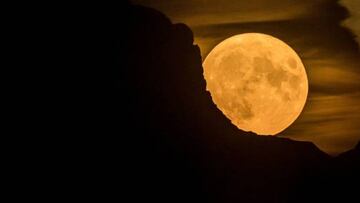Sturgeon Supermoon: how to see it and when is the best time to watch?
The final supermoon of 2022 is coming later this week and offers a great opportunity for star-gazers and amateur photographers alike.

The last of 2022′s four supermoons will be burning its way across the night’s sky later this month, capping the end of a run of four huge supermoons which began in May. This week’s lunar marvel is nicknamed the ‘Sturgeon Supermoon’.
The term ‘supermoon’ is used to describe a full moon that occurs while at the nearest point to earth. The moon’s orbit around the moon is not a perfect circle, meaning that the distance between the two celestial bodies varies throughout the month. When the moon is closest to earth it appears bigger and brighter from our perspective, making it more impressive for star-gazers.
When is the Sturgeon Supermoon?
The full Sturgeon Supermoon will take place during the night between Thursday 11 and Friday 12 August. For watchers in North America the moon will be most visible late on Thursday, while Europeans will get the best view in the early hours of Friday.
The only night on which it is possible to see the moon appear at the horizon during dusk is on the night of the full moon. This point is generally considered the best time watch, during the twilight phase when the sun has disappeared below the horizon but is illuminating objects in the night sky.
If you are hoping to test your photography skills at the same time, full moon night is the best time to do so. The sun will be illuminating the night sky but objects on earth will be shrouded in darkness, making it possible to capture some pretty impressive snaps, silhouetted against the full moon.
Why is it called the Sturgeon Supermoon?
Many of the terms commonly used for full moons given in The Old Farmer’s Almanac have roots in Native American, Colonial American and European cultures. Typically the name applied to a full moon was also used to describe the entire lunar month in which it occurred.
The Sturgeon Moon is commonly used for the August lunar cycle and is so named because of the huge fish found in the Great Lakes and Lake Chaplain. Giant sturgeon could be most easily caught during late summer and it became a valuable source of protein for locals.
These days lake-dwelling sturgeon are fairly rare, due in no small part due to a period of intense overfishing in the 19th century, but the prehistoric-looking fish give the Sturgeon Supermoon its name.






